
Stories
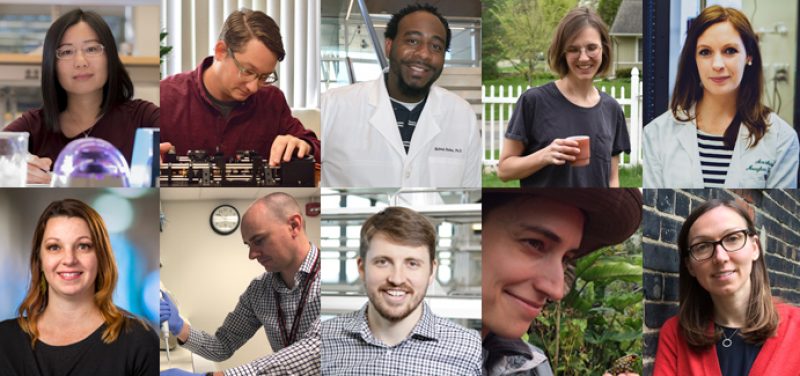
Announcing the 2019 Rita Allen Foundation Scholars
Major grants will support ten pioneering early-career biomedical scientists.
The Rita Allen Foundation has named its 2019 class of Rita Allen Foundation Scholars, celebrating ten young leaders in the biomedical sciences whose research holds exceptional promise for revealing new pathways to advance human health. The selected Scholars will receive grants of up to $110,000 annually for a maximum of five years to conduct innovative research on critical topics in cancer, immunology, and neuroscience—including how novel genes originate and evolve, how the brain controls the perception of pain, and how maternal interactions influence neonatal health.
The 2019 class of Rita Allen Foundation Scholars includes five scholars whose research relates to the biology of pain—a complex neurobiological system with widespread societal impact. Three of these Award in Pain Scholars are supported by the Open Philanthropy Project. This new support allows the number of Rita Allen Foundation Scholars to reach a new high in the program’s 43-year history.
“We welcome this remarkable group of scientists—their bold approaches to research will extend the frontiers of biomedical science in at times unexpected, transformative directions,” said Elizabeth Good Christopherson, President and Chief Executive Officer of the Rita Allen Foundation. “We are particularly excited that new support from the Open Philanthropy Project will fuel new research on the mechanisms of pain, opening the door for pioneering research in an area of great promise and great need.”
Since 1976, the Rita Allen Foundation has invested in more than 175 biomedical scientists at the early stages of their careers, enabling them to pursue research directions with above-average risk and promise. Scholars have gone on to make fundamental contributions to their fields of study, and have won recognition including the Nobel Prize in Physiology or Medicine, the National Medal of Science, the Wolf Prize in Medicine, the Lasker-Koshland Award for Special Achievement in Medical Science, and the Breakthrough Prize in Life Sciences.
Five of the 2019 Scholars were nominated by research institutions in the United States and selected by the Rita Allen Foundation’s Scientific Advisory Committee of leading scientists and clinicians. Five additional Scholars were selected for the Rita Allen Foundation Award in Pain in partnership with the American Pain Society.
The members of the 2019 class of Rita Allen Foundation Scholars are:
Matthew Banghart, University of California, San Diego
Michael Burton, University of Texas at Dallas (Award in Pain)
E. Josie Clowney, University of Michigan (Milton E. Cassel Scholar)
Meaghan Creed, Washington University in St. Louis (Award in Pain)
Peter Grace, University of Texas MD Anderson Cancer Center (Award in Pain)
Meghan Koch, Fred Hutchinson Cancer Research Center
Jordan McCall, Washington University in St. Louis (Award in Pain)
Lauren O’Connell, Stanford University
Vivianne Tawfik, Stanford University (Award in Pain)
Li Zhao, The Rockefeller University
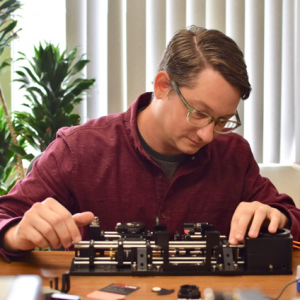
(Photo: Jenny He)
Matthew Banghart, University of California, San Diego
Assistant Professor, Neurobiology
B.S., University of the Sciences in Philadelphia
Ph.D., University of California, Berkeley
Our perception of the world around us is heavily shaped by factors such as prior experience, expectations, attentional focus, and drugs—both therapeutic and recreational. Yet, how context influences sensory information processing in the brain is largely a mystery. The Banghart Lab aims to understand how the brain controls the perception of pain. Toward this goal, the lab studies the neural mechanisms that support both pharmacological analgesia (e.g. opioid painkillers), as well as “top-down” pain modulation, wherein pain suppression is driven purely by cognitive processes (e.g. placebo analgesia). By revealing the similarities and differences between the neural circuits and neurochemical signals that underlie these forms of pain modulation, this work may one day contribute to the development of new therapies.
What will funding from the Rita Allen Foundation allow you to do?
I have always been intrigued by the phrase “mind over matter,” which refers to one’s ability to control a physical condition or problem using the mind. Funding from the Rita Allen Foundation will allow me to investigate the neural basis of this fascinating phenomenon in the context of pain, using non-canonical, multidisciplinary approaches at an early point in my career.
What is your favorite science-related book?
As a teenager, reading Michael Talbot’s The Holographic Universe helped kindle my interest in neuroscience. Steeped in mysticism and pseudoscience, it offers astonishing stories of “mind over matter” and other paranormal phenomena of the cognitive realm that have been documented, often by medical practitioners, over the last few centuries.
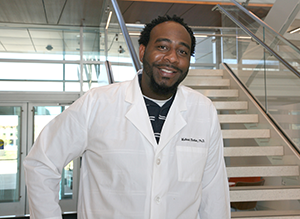
(Photo: Michael Burton)
Michael Burton, University of Texas at Dallas
Assistant Professor, Behavioral and Brain Sciences
B.S., University of Illinois at Urbana-Champaign
Ph.D., University of Illinois at Urbana-Champaign
Recent initiatives have revealed the importance of how different cell types recognize and respond to pain stimuli. Mastering these single-cell paradigms will lead to a better understanding of mechanisms in pain plasticity and evolve new therapeutics. My work sits at an important interface between the immune and nervous system and strives to understand the complex nature of their interconnectivity. The lab has three areas of focus: inflammation, aging, and cannabinoid signaling. We hope to understand how factors like age, sex, and endogenous cannabinoid signaling modulate pain outcomes.
How did you enter this career path? Was there anyone or anything that particularly inspired you?
My introduction into the pain field was quite serendipitous. During my first postdoc at the University of Texas Southwestern with Joel Elmquist, I was working on a project that assayed peripheral sensory neurons in the context of metabolism. As I conducted experiments, it became clear that these mice were different; they did not seem to exhibit pain in a similar way throughout their life, and I was intrigued to find out more information about them. Luckily Dr. Elmquist was supportive—he allowed me to seek a second postdoc mentor in the realm of pain and use these animals for that purpose. This is when I found my second postdoc mentor, Ted Price at UT Dallas in 2015. After I e-mailed Ted about my interest and resources, within an hour of the initial e-mail we had a meeting, and within an hour after our first in-person meeting, the aims of my eventually funded K-award were taking shape with Ted’s help.
What will funding from the Rita Allen Foundation allow you to do?
To receive the 2019 Rita Allen Foundation Award in Pain is an overwhelming honor. It means that my ideas in understanding cellular mechanisms in cannabinoid signaling are robust and represent a clear need in project development and understanding in the field. This project serves to help resolve some debate about several aspects of cannabinoid signaling and, with the support of the Rita Allen Foundation Award, begins to lay important groundwork for future related projects in my lab.
What is your favorite science-related book?
My favorite science book is Silent Spring. I read this book as a freshman in college in my environmental toxicology elective course. The book was originally published in 1962 and documents the indictment of DDT, which led to its ban in the United States and to the modern-era environmental movement. The author, Rachel Carson, a marine biologist and conservationist, argued that DDT killed almost everything indiscriminately—not only bugs that were “pests.” She purported that eventually DDT would make its way up the food chain and end up in birds and other mammals, leading to reproductive issues and eventually leading to no birds in the spring. The book led me to volunteer in a veterinary toxicology lab, where I discovered my love for basic research.
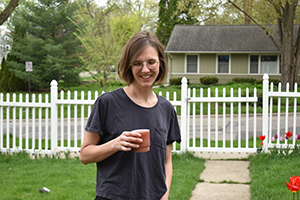
Photo: Sean Schuster-Craig
E. Josie Clowney, University of Michigan
Assistant Professor, Molecular, Cellular, & Developmental Biology
B.S., University of Michigan
Ph.D., University of California, San Francisco
Josie Clowney has been designated the Milton E. Cassel Scholar for the 2019 class of Rita Allen Foundation Scholars. This special award honors the memory of a longtime President of the Rita Allen Foundation who passed away in 2004.
Our bodies make direct contact with environment-derived molecules including volatiles, dietary nutrients, and microbial components. The evolutionary problem of detecting and responding to extraordinarily diverse exogenous compounds has been solved similarly in chemosensory, digestive, and immune systems, by the evolution of large families of cell surface and secreted proteins whose members each have limited binding affinities. The Clowney lab studies how these large gene families evolved; how they are coordinately regulated across cells; and, in the chemosensory system, how signals flowing through chemosensory receptors can be meaningfully interpreted to allow suitable behavioral responses. We are particularly interested in understanding the distinct biological mechanisms that allow reflexive responses to evolutionarily predicted stimuli versus flexible responses to arbitrary or evolutionarily unpredicted stimuli.
What will funding from the Rita Allen Foundation allow you to do?
My work thus far has focused on how the nervous system detects environmental molecules through the senses of smell and taste, but this is a process that is shared with the digestive and immune systems. Funding from the Rita Allen Foundation will allow us to compare mechanisms operating across these three body systems.
What is your favorite science-related book?
I have a lot of favorites: The Periodic Table by Primo Levi, Benoit Mandelbrot’s The Fractal Geometry of Nature, Turing’s Cathedral by George Dyson, The Beginning of Infinity by David Deutsch, Math Games I, II and III by Mitsumasa Anno, and foundationally, A Wrinkle in Time.

(Photo: Sarah Quernheim)
Meaghan Creed, Washington University in St. Louis
Assistant Professor, Anesthesiology
B.S., University of Toronto Scarborough
Ph.D., University of Toronto
Our research focuses on synaptic plasticity and neuromodulation within defined neural circuits in the ventral basal ganglia, a collection of brain structures involved in reward learning and selection of flexible behavior. Specifically, we ask how chronic pain, addictive drugs, or genetic mutations alter function of these neural circuits, and how circuit dysfunction contributes to symptoms of chronic pain, substance use, and mood disorders. Our ultimate goal is to leverage insight from circuit studies to develop novel neuromodulation for these disorders, including deep brain stimulation and focused ultrasound. By first determining how neuronal and circuit adaptations drive specific behavioral symptoms of disease, we can establish a strategy for targeted circuit manipulation in a disease state. We then rationally design neuromodulation paradigms and validate them in model systems to provide novel strategies to treat symptoms at the interface of chronic pain, mood, and substance use disorders.
What will funding from the Rita Allen Foundation allow you to do?
Support from the Rita Allen Foundation will allow my team and I to investigate how prolonged pain experiences drive functional changes in basal ganglia circuits. By integrating molecular, electrophysiological, and behavioral approaches, we will investigate how brain regions that process painful stimuli communicate with defined populations of neurons within the basal ganglia, and how the activity of these circuits changes as a result of the chronic pain experience. Ultimately, we hope to use this mechanistic understanding to normalize communication between neurons to restore basal ganglia circuit function and improve depression-like symptoms that emerge in chronic pain disorders.
What is your favorite science-related book?
Blaming the Brain and Great and Desperate Cures, both by Elliot Valenstein. These are retrospectives on the scientific, social, commercial, and political factors that shaped modern pharmacological and neurosurgical approaches to treating mental illness. Because they are so critical of existing treatments, reading (and re-reading) these books motivated me to investigate better ways to treat mental illness.
Reflections of Eden: My Years with the Orangutans of Borneo by Biruté Galdikas and The Coming Plague: Newly Emerging Diseases in a World Out of Balance by Laurie Garrett painted scientists as heroes, either in terms of environmental conservation efforts, or containing the spread of disease epidemics. I read both books in high school and they instilled in me how exciting science could be.
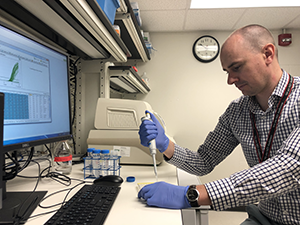
(Photo: Peter Grace)
Peter Grace, University of Texas MD Anderson Cancer Center
Assistant Professor, Symptom Research
B.S., University of Adelaide
Ph.D., University of Adelaide
In conjunction with the Open Philanthropy Project
Pain that becomes chronic and outlasts the period of healing is a major medical challenge. The Grace Lab investigates the neuroimmune interactions that drive chronic pain. After injury to sensory nerves, glial cells, such as microglia and astrocytes, are activated throughout the central nervous system. These activated glia secrete neurotransmitters and cytokines that increase the excitability of neurons in pain pathways. We are focused on the open question of how spinal cord astrocytes are persistently activated in such remote regions. This line of research is also being expanded to determine how activated glia in the brain also contribute to common comorbidities of chronic pain, including depression, anxiety, and cognitive impairments. The ultimate goal of this work is to find new ways to treat chronic pain.
What will funding from the Open Philanthropy Project allow you to do?
Funding from the Open Philanthropy Project will allow me to investigate the function of a completely unexplored receptor that is expressed by astrocytes, which may provide insight into why these cells are persistently activated after remote nerve injury.
What is your favorite science-related book?
My favorite science-related book is Guns, Germs, and Steel by Jared Diamond.
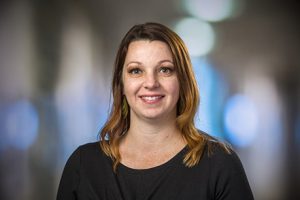
(Photo: Robert Hood)
Meghan Koch, Fred Hutchinson Cancer Research Center
Assistant Member, Basic Sciences Division
B.S., University of California, Santa Barbara
Ph.D., University of Washington, School of Medicine
My lab is interested in understanding how maternal-offspring interactions influence neonatal health. We take a comprehensive approach, analyzing multiple aspects of physiology such as immunity, development, and metabolism. Recently, we demonstrated that healthy mothers produce a range of antibodies that bind to bacteria living in the infant gut. Transfer of these antibodies to offspring through breast milk is necessary to limit neonatal immune responses and promote peace between gut bacteria and their infant hosts. Currently, we are characterizing how these antibodies are generated, exploring how maternal antibodies achieve their effects, and determining the long-term consequences these antibodies have on offspring health. Additionally, we are developing systems to identify and characterize how the complete set of maternal-derived factors contributes to health.
What will funding from the Rita Allen Foundation allow you to do?
Funding from the Rita Allen Foundation will allow me to expand my research in a different direction; namely, investigating how growth during early life is regulated. Though an important global health issue, it has been difficult to determine the factors necessary for normal childhood growth due to the contributions of multiple confounding factors (for example, varied environmental conditions). My discovery that maternal antibodies provided in breastmilk promote weight gain in neonatal mice is a major breakthrough. Funding from the Rita Allen Foundation will allow me to use this highly tractable system to explore how maternal antibodies regulate multiple aspects of neonatal physiology, including immunity and metabolism, to promote weight gain during early life.
How did you enter this career path?
I became interested in research during my time as an undergraduate at the University of California, Santa Barbara. After a brief stint in computer science (I just didn’t speak the language), I started taking general biology classes. I knew I had found my passion when I took my first immunology course. The course was taught by Duane Sears, who took a different approach to teaching than others at UCSB. Dr. Sears’s tests were open book and open note. Rather than requiring us to simply memorize facts and pathways, Dr. Sears tested our ability to critically analyze and interpret data. I loved the challenge and I particularly enjoyed the subject matter. I ended up volunteering in the Sears lab while working at Trader Joe’s and finishing my degree. Though we were “small-time”—I was one of two people in the lab—I loved the research environment. From there, I decided to apply to graduate school, and the rest is history! I’m thrilled to be a new faculty member at the Fred Hutchinson Cancer Research Center in Seattle and look forward to many more years of research ahead of me.

(Photo: Linda Mueller, St. Louis College of Pharmacy)
Jordan McCall, Washington University in St. Louis
Assistant Professor, Anesthesiology
B.S./B.A., University of Missouri Columbia
M.P.H., University of Missouri Columbia
Ph.D., Washington University in St. Louis
In conjunction with the Open Philanthropy Project
I lead a multidisciplinary research program aimed at understanding the neural mechanisms underlying the emotional distress associated with stress, chronic pain, and addiction. The long-term goal of the laboratory is to use a neural circuit-level understanding of the brain systems that are disrupted in anxiety and chronic pain to reverse these conditions. If these questions become intractable, the laboratory plans to develop new wireless technology to interface with the nervous system and explore new approaches to data analysis to access the most information from collected data.
What will funding from the Open Philanthropy Project allow you to do?
This funding makes what is easily the riskiest project in the lab a much more secure venture. One of the biggest challenges we face using rodents as models of complicated human conditions is that we cannot ask the animals how they feel. A simple question, but a very difficult one to answer. With this award, we will be working to overcome this barrier by extracting detailed information from videos of the animal’s behavior to determine whether they are in pain, or distress. We will use new types of data analysis from mathematics to essentially ask the mice that simple question, “How do you feel?” By the end of this award, we aim to have made strides in identifying stress and pain in animals without having to disturb their daily routine. This approach will hopefully enable new strategies for understanding neural circuit function and therapeutic development. As a personal bonus, it also means I get to keep working with my close friend and colleague in mathematics, Carl Hammarsten.
How did you enter this career path? Was there anyone or anything that particularly inspired you?
Hindsight is crystal clear, right? I took a bit of a winding path here after a stint in health policy, but I think my career story starts with a tragedy. When I was 18, the 15-year-old that I drove to school every day committed suicide. I could not comprehend it then. I cannot comprehend it now. I think my way of dealing with the shock and sadness of those times was to start researching human behavior. As a freshman at the University of Missouri, I started doing psychology research. I would not be here today without Alan Strathman, who chose to treat me more like a graduate student than an undergraduate. That push helped me get my footing in research, and when I eventually decided I wanted to focus more on neurobiology, Alan helped me find my next mentor, Matt Will, whose interest in endogenous opioid systems really set me on the path I am on today.
What is your favorite science-related book?
Favorite? I’m going to bend the rules. Cat’s Cradle by Kurt Vonnegut changed the way I thought about humanity when I was a teenager. A Brief History of Nearly Everything by Bill Bryson changed my concept of what kind of people become scientists—something I think we must actively do to make clear to younger generations that it’s a career that needs all walks of life to thrive. Finally, Sapiens: A Brief History of Humankind by Yuval Noah Harari once again changed the way I look at humanity now that I am thirtysomething. I can go on…
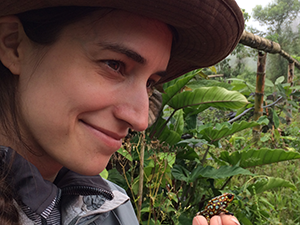
(Photo: O’Connell Lab)
Lauren O’Connell, Stanford University
Assistant Professor, Biology
B.S., Cornell University
Ph.D., University of Texas at Austin
Communication of nutritional need during infancy is our very first social interaction, laying the foundation for a healthy life by acquiring nutrition for growth and establishing strong social bonds with caregivers. The O’Connell lab uses a unique biological model—translucent social tadpoles—to uncover how neonates evaluate their nutritional state, recognize their caregivers, and communicate to their caregivers that they need food. We will carry out this research by mapping the molecular and cellular mechanisms that regulate neonate feeding behavior and social communication of hunger. These studies have implications for informing preventative strategies and treatments for childhood eating disorders and autism spectrum disorders—two of the most prevalent diseases afflicting the youngest members of our society.
Was there anyone, or anything that particularly inspired you?
I became interested in how neonates regulate nutrition and social communication after the birth of my first daughter, Evelynn, who was born premature and unable to perform these critical functions. After looking in the literature, I became aware that very little is known about the development and function of neural circuits in infants due to difficulties in imaging and manipulating these cells in neonates of traditional laboratory models like mice. I have since dedicated my efforts to understanding the basic biology of neonate brain development and function in order to provide a foundation on which future therapeutic targets can be identified.
What is your favorite science-related book?
The book that made me want to be a scientist was Michael Pollan’s Botany of Desire.
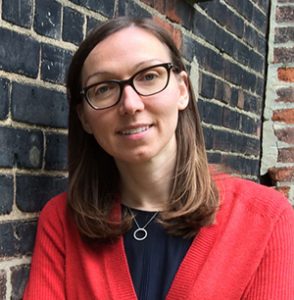
(Photo: Jessica Tawfik Hill)
Vivianne Tawfik, Stanford University
Assistant Professor, Anesthesiology, Perioperative, and Pain Medicine
B.Sc., McGill University
M.D./Ph.D., Dartmouth College
In conjunction with the Open Philanthropy Project
The mission of the Tawfik Lab is to do the best clinically informed basic science research to advance our understanding of the neuroimmune contribution to chronic pain in a thoughtful manner, with our patients always in mind. We are particularly interested in understanding the unique underpinnings of various types of chronic pain and how central nervous system glial cells (astrocytes and microglia) contribute to the transition from acute to chronic pain. Microglia are particularly interesting to us, as the macrophages of the central nervous system with known roles in synaptic pruning and neuroinflammation. Funding from the Open Philanthropy Project will allow us to dive more deeply into the contribution of spinal cord microglia using transgenic manipulations and microglial transcriptome analyses in a mouse model of complex regional pain syndrome (CRPS), a disease that affects the limbs after minor fracture, or surgery. We expect that our findings in this model will also extend to other forms of chronic pain and allow for the development of more specific glial-targeted therapeutics.
How did you enter this career path? Was there anyone or anything that particularly inspired you?
A series of people “nudged” my career over time, starting with Mark Ware, Director of Clinical Research of the Alan Edwards Pain Management Unit at McGill University, where I completed my undergraduate degree. I had my first “science job” working for him, assembling a reference library with the intention of going to graduate school for a Ph.D. in Pharmacology. One day he pulled me aside and just flat out said to me “Viv—you should think about being a doctor, I think you would be good at it,” and so I decided to apply to M.D./Ph.D. programs.
I was then lucky enough to meet Joyce DeLeo at Dartmouth Medical School and pursued my Ph.D. in her lab. She was such a wonderful female role model, and I was excited about her work on glia and pain. In her lab, I started my love affair with glial cells and found that manipulating these cells could reverse existing pain. Throughout my Ph.D., I spent time in the Dartmouth-Hitchcock Medical Center Pain Clinic, where I met Gil Fanciullo, who encouraged me to consider anesthesiology as a medical specialty. He was right to point me in that direction; anesthesiology was the perfect fit for my research and clinical interests. I then went on to join the anesthesiology residency research track at Stanford University, with the intention to subsequently pursue a subspecialty Pain Medicine fellowship.
After so many years of clinical training, I felt a bit overwhelmed trying to get back into research. Dr. Deleo, who remained a close mentor, suggested that I meet with her longtime friend, Allan Basbaum at the University of California San Francisco to strategize my “re-entry” into basic pain research. Allan suggested that I work with his former postdoc, Gregory Scherrer (2016 Rita Allen Scholar), who was setting up his lab at Stanford at that time. I joined Greg’s lab and had the chance to re-learn rigorous basic science and novel techniques, many of which I use in my own lab today. With Greg I focused on the expression of delta and mu opioid receptors in the peripheral and central nervous system, and established that spinal cord microglia do not express the mu opioid receptor. After a second postdoc with Dave Clark, also at Stanford, to learn clinically informed animal models, I was able to launch my own lab and have been slowly building my own team over the past year.
It may have been an incredibly long journey, but I truly believe that I have the best job in the world now. I get to care for patients with chronic pain, help train future physicians, mentor brilliant students and postdocs, and pursue exciting and important research questions. What could be better?
What is your favorite science-related book?
As a pain physician, basic science pain researcher, and mother of two young boys, I don’t have much time for reading outside of scientific manuscripts and children’s books. That said, I absolutely love the book Ada Twist, Scientist by Andrea Beaty, illustrated by David Roberts. This brilliantly rhyming and whimsical account of young Ada Marie Twist’s fledgling scientific career is captivating—and a refreshing bedtime story for even the most tired parent. Named after two famous female scientists, Ada Lovelace (one of the first computer programmers) and Marie Curie (two time Nobel Prize winner), Ada Marie reminds us how curiosity about the “Why? How? When?” of life is in the heart of every scientist and is part of what pushes us every day.
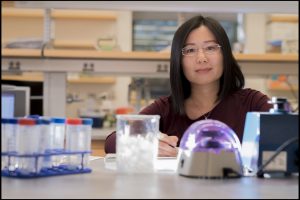
(Photo: Mario Morgado, The Rockefeller University)
Li Zhao, The Rockefeller University
Assistant Professor, Evolutionary Genetics and Genomics
B.S., Inner Mongolia University, China
Ph.D., Chinese Academy of Sciences
Each living species and every phylogenetic clade has a unique set of genes and phenotypes. Understanding how novel genes originate and subsequently evolve is crucial to explaining the genetic basis of novel phenotypes and ultimately the diversity of life. However, because the relationship between genes and phenotypes is complex and multidimensional, how and what type of genetic innovations contribute to novel organismal phenotypes remains largely unknown. Research in the Zhao Laboratory aims to understand the origination and evolution of molecular innovations as well as how they contribute to phenotypic innovation and adaptation. One of the focuses in the lab is to use de novo genes, which are genes that have originated from non-genic sequences of genomes, as a unique paradigm to tackle these questions. In the long-term, the Zhao lab aims to decipher the principles of gene origination and its underlying positive or negative impact on population dynamics and human health.
What will funding from the Rita Allen Foundation allow you to do?
Funding from the Rita Allen Foundation provides my lab with the crucial funds and flexibility to open a new line of research toward the study of genetic and functional innovation in human populations in order to better understand how these processes impact human health.
How did you enter this career path? Was there anyone or anything that particularly inspired you?
Ever since I was young, I have been fascinated by the diversity of species in nature. In elementary school, my science teacher encouraged me to ask all sorts of biological questions related to the wildlife surrounding us, which stimulated my curiosity about life sciences. I was fortunate to have great teachers throughout my middle school and college, which led me to pursue a Ph.D. in evolutionary genetics after I graduated.
What is your favorite science-related book?
An influential science-related book to me is The Selfish Gene by Richard Dawkins. This book had a profound impact on me when I was an undergraduate student. Interestingly, I read a Chinese version of this book first, and only much later realized that the original English version is much better written.